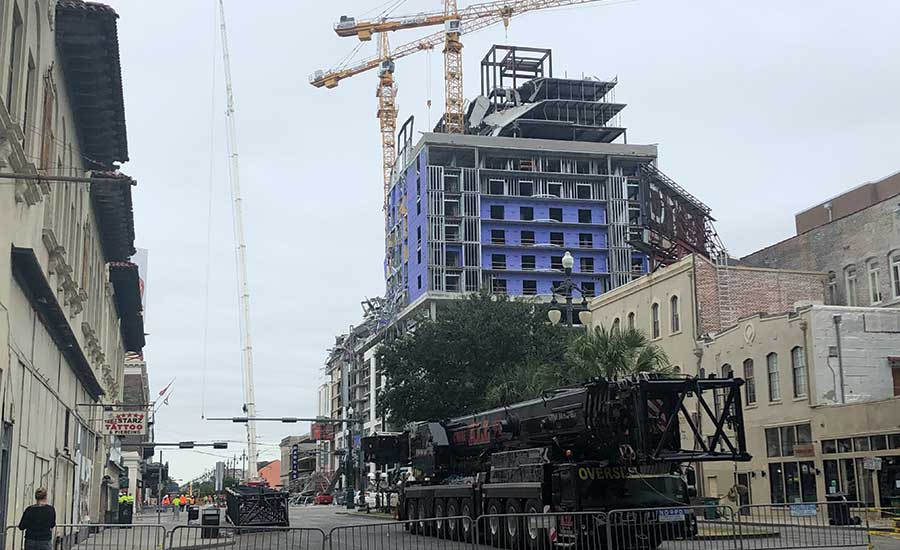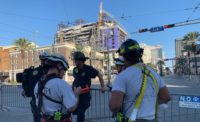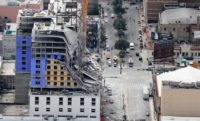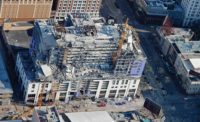When reports first came of a partial collapse of an 18-story hotel under construction in New Orleans, structural engineer Gary Panariello was ready for the call that soon followed.
Working as a managing director for Thornton Tomasetti, Panariello has investigated his share of construction failures over the past decades. But the severely damaged Hard Rock Hotel at the edge of the busy French Quarter in New Orleans posed an unusual challenge. Two tower cranes on the site had been badly damaged during the collapse of the building’s upper floors, and both were in imminent danger of total failure.
The city was focusing on search and rescue, and the full extent of the damage to the building and the cranes was still unknown. Called in by demolition contractor D.H. Griffin Cos. in the days after the collapse, Panariello knew he and the team had a lot on their plates.
From the moment he walked onto the site, Panariello saw that the two cranes were dangerously unstable, and pressed the city to expand the exclusion zone around the site and speed up plans to secure the tower cranes.
Working alongside his colleague and fellow Thornton Tomasetti structural engineer John Abruzzo, Panariello performed an assessment of the cranes while consulting with the equipment’s owner and manufacturer on the best options available. Time was limited because a tropical depression in the Gulf of Mexico was predicted to hit New Orleans a few days later, bringing wind speeds that might collapse the overloaded and unstable tower cranes.
Working with the demolition contractor, the City of New Orleans and the team of first responders at the site, Panariello was the person who initially concluded a controlled demolition using explosives was the best option to secure the cranes. This was an unusual choice, since tower cranes are generally not imploded in crowded urban centers. But Panariello and Abruzzo realized the partially collapsed hotel structure was too unstable to anchor the cranes, and the cranes were far too damaged to dismantle using traditional means.
“Gary brings a lot of experience and professionalism to what can already be a very stressful and chaotic time, when stakeholders don’t have the technical expertise to understand the implications of the decisions they might make,” says Mark Loizeaux, president of Controlled Demolition, Inc., which performed the successful implosions of the two tower cranes. “He was instrumental in working with the city to design safety controls [at the collapse site].”
Loizeaux worked with Panariello at Ground Zero shortly after the 9/11 attacks in New York City in 2001, and says he is a welcome sight at any disaster response effort. “Gary is a humble guy who is there to solve a problem.”






Post a comment to this article
Report Abusive Comment